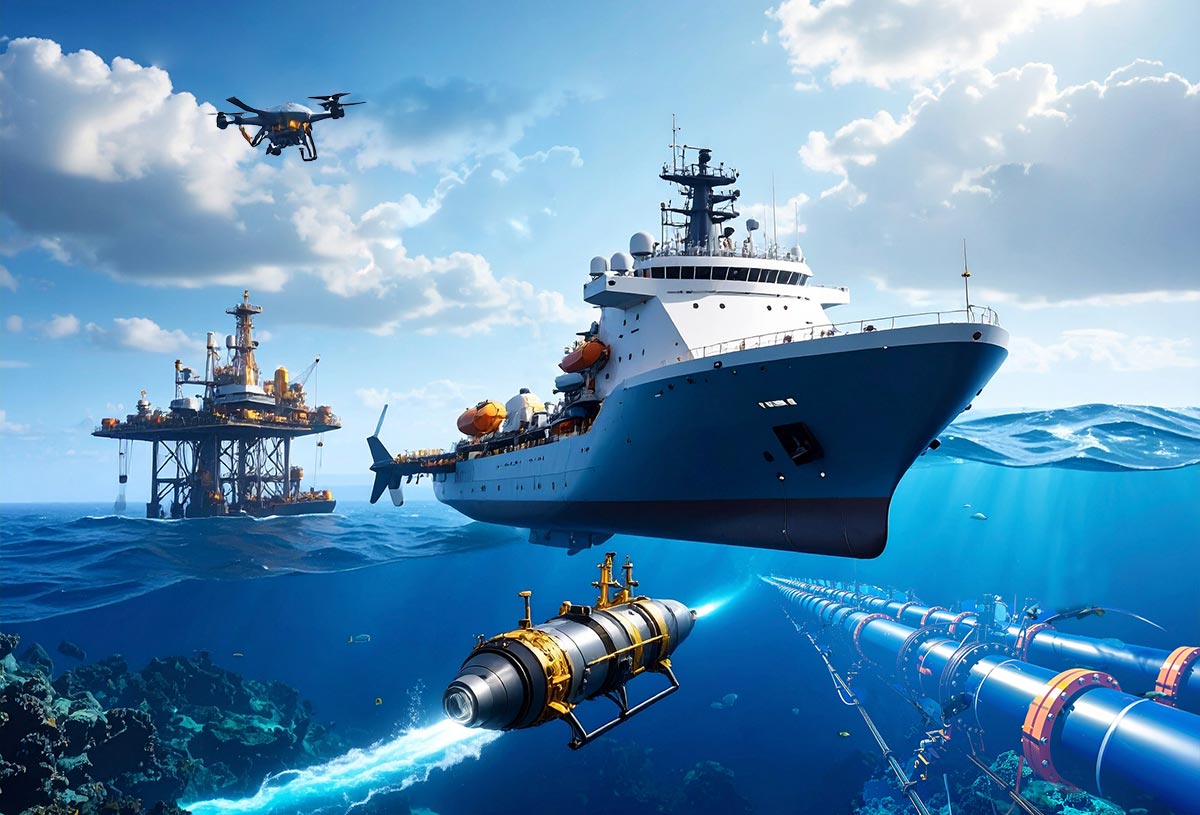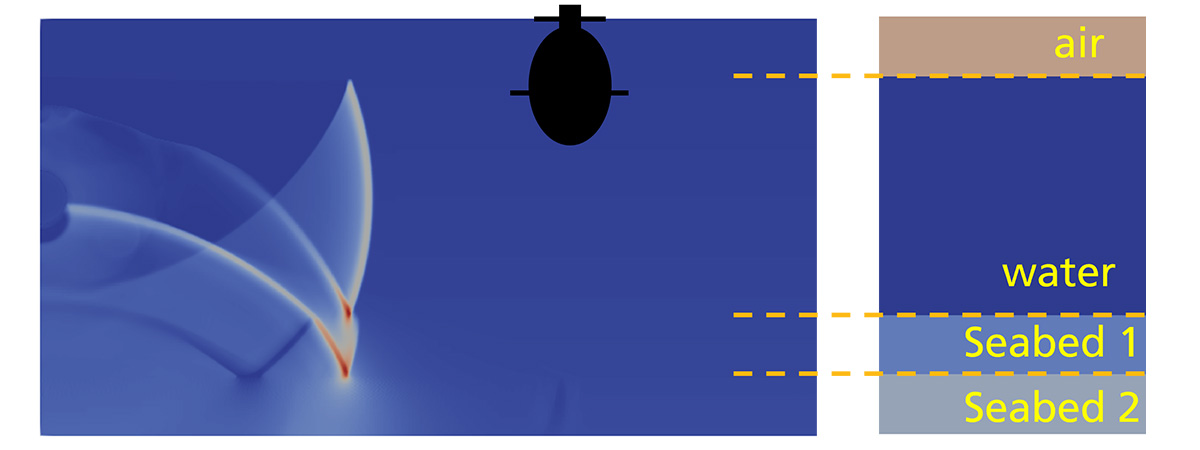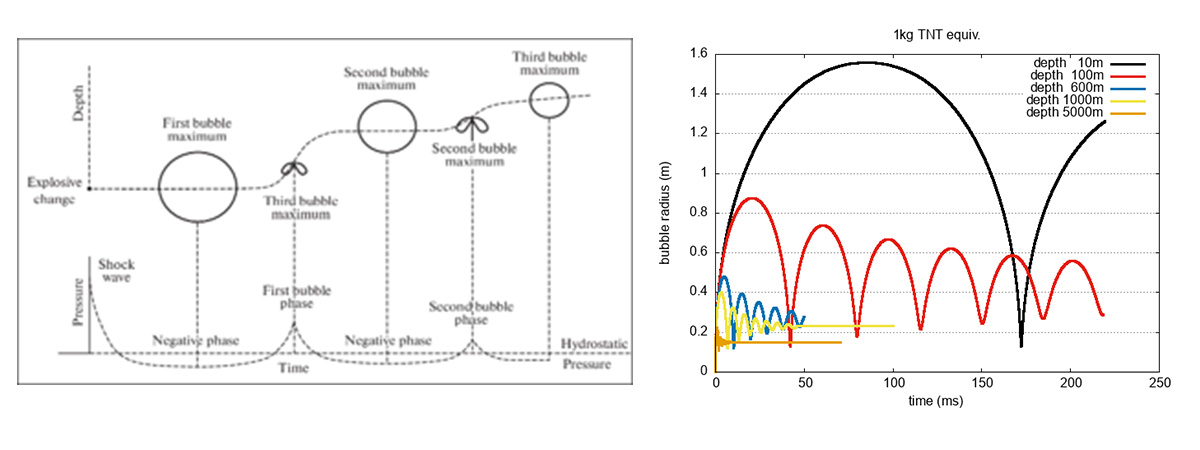Ports, shipping routes, offshore installations, pipelines, and data cables are increasingly targets of sabotage and terrorism in Germany and Europe. The Fraunhofer EMI is researching how to make these maritime structures more resilient.
Maritime Safety

Threats from the air and water present a major challenge for maritime structures such as ports, shipping routes, or pipelines. They are considered critical areas that need special protection. And there are good reasons for this, as the impacts on supply, communication, and everyday life in the event of a failure are significant. An example is the grounded container ship "Ever Given," which blocked the Suez Canal for almost a week in 2021, causing a global supply crisis.
In this context, pressing questions arise: What threat scenarios are to be expected or conceivable? What damage pattern would be expected in the event of a terrorist attack or act of sabotage? And what effective protective measures can be derived?
To address these challenges, Fraunhofer EMI is intensively engaged with the resilience of maritime structures, both above and below water. The institute draws on its extensive experience in high-speed dynamics to develop optimal solutions for securing maritime infrastructures.
Simulation-based Assessment
One central question is how to reliably assess the complex components of protective structures with regard to dynamic load inputs, such as those from the detonation of a sea mine. This is particularly challenging in an incompressible medium like water.
For over ten years, Fraunhofer EMI has been researching short-term dynamics in water as the surrounding medium. Fluid-structure coupled systems exposed to underwater explosion (UNDEX) loads represent a challenge for numerical simulation. Physically demanding effects from the near field, such as cavitation and the backflow from the gas bubble of the combustion products, significantly influence the expected load curves.
Research interests in the maritime sector
Our research in the maritime sector focuses on several key topics.
A central aspect is the simulation of the detonation of high-energy explosives and the propagation of shock waves underwater. In these investigations, the coupling and decoupling of shock waves in the seabed are also examined to better understand dynamic load exposure and interactions with structures.

Another focus lies in testing efficient protective mechanisms and methods to enhance the resilience of maritime infrastructures. Additionally, we analyze depth-dependent underwater detonations to investigate their physical processes and better evaluate the impacts. The simulation of gas bubble formation plays a crucial role, as it influences essential processes.

Moreover, research is conducted on how scaling effects influence the structural response. As part of these research activities, the further development of efficient simulation tools, such as the APOLLO blast simulator, a proprietary development of EMI (Non-ITAR), is being advanced to enable more precise and reliable analyses. The APOLLO blast simulator is based on a finite volume discretization with explicit time integration on a Cartesian grid and a two-step procedure for Eulerian integration. An interface allows interaction with finite element structure codes.
Collaboration with Fraunhofer EMI
Through collaboration with Fraunhofer EMI, our partners benefit from state-of-the-art technology and expertise that we apply in practice to develop maritime security solutions and effectively minimize risks.
We offer comprehensive risk analyses based on the latest scientific findings and ensure that protective measures are both effective and efficient.
Our expertise supports our partners in identifying potential hazards and developing appropriate prevention strategies, thereby maximizing the safety and reliability of critical systems.
